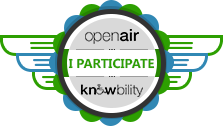On December 1st, 2017, I participated in a virtual panel on how people with brain injuries utilize the web.
I am honored to be part of a panel of world wide experts.
These are the three things I found most interesting about this experience.
- David Fazio and I are both leaders who have had a traumatic brain injury (TBI). David is CEO of Helix Opportunity, Inc. and incredibly successful, even after having endured a TBI as a teen. He figured out how to work around his deficits. He’s got a lot to teach me!
- Neither David nor I identify as having a disability, even though we both are indeed disabled.
- Other experts on the panel, a person with autism, persons with blindness, and persons with other conditions, articulated many commonalities with David and me, even though we had very different disabilities.
Many thanks to Deque and particularly Laura Goslin who moderated the panel.
Here is Laura’s summary and a link to the virtual panel. Enjoy!
Virtual Panel How Persons with Brain Injury Use the Web
Virtual Panel How Persons with Brain Injury Use the Web

